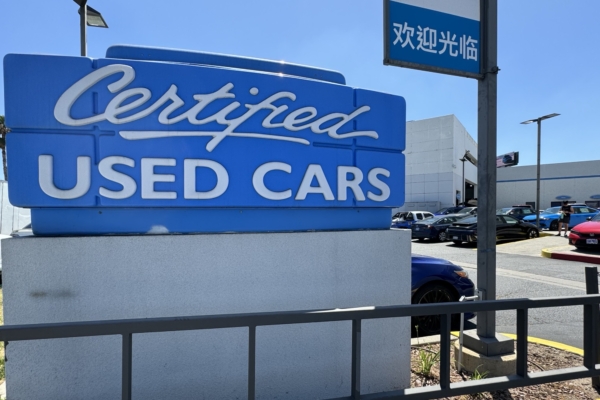In 2025, buying a used car in the United States with a car age of three years or less for less than $20,000 has become almost an impossible task. According to the latest report released by the automotive data website iSeeCars.com, the proportion of used cars with a three-year age selling for less than $20,000 has dropped sharply from nearly 50% in 2019 to just 11% now, indicating that affordable used cars are rapidly disappearing from the American market.
On June 24th, iSeeCars.com published a report titled “The Sub-$20K Used Car Is Almost Gone,” analyzing over 2.6 million three-year-old used cars. The report reveals that the average selling price of used cars is currently $32,635, compared to $23,159 in 2019, marking a significant increase of $9,476, or 40.9% over the past six years.
Furthermore, the report indicates that in 2019, used cars priced below $20,000 accounted for 49.3% of the three-year-old used car market, whereas today, this figure stands at only 11.5%. Among different vehicle types, sedan prices have surged by 48.7%, truck prices by 28.8%, and SUV prices by 15.4%.
Karl Brauer, the Chief Analyst at iSeeCars, stated, “While the pandemic may be in the past, the decline in new car production from five years ago has left a ‘post-pandemic aftermath’ in the used car market. Many car buyers can no longer afford newer used cars and are forced to consider older models with higher mileage to fit within their budget.”
In fact, it has become increasingly challenging for most consumers looking to purchase a used car to find a three-year-old model priced below $30,000, let alone $20,000. Brauer emphasized, “Due to high demand, there is very little room for negotiation in the used car market. For the past two years, used car prices have been gradually declining by a small margin each month. However, in the recent three months, prices have started to rise again.”
The report highlights, “Used car prices have been steadily increasing for the past three months, with no signs of a decline in sight.”
Brauer noted that in February of this year, the average listing price for one to five-year-old used cars was $31,257, marking a 1% increase from the same period last year. By June, prices had risen to $32,437, representing a 4.8% increase year-over-year.
Experts attribute the significant rise in used car prices to various factors:
Brauer explained that during the second half of 2020, new car production was severely restricted due to the COVID-19 pandemic. Car manufacturers had temporarily shut down assembly plants, leading to delays in production lines restarting. Even as production resumed, challenges such as the 2021 semiconductor shortage further hindered new car manufacturing.
“From mid-2020 to 2022, new car production suffered significantly. Now in 2025, three-year-old used cars should have been produced in 2021 and 2022, but their supply cannot meet the demand in the used car market due to restrictions on new car production three years ago,” Brauer stated.
The pandemic also caused an increase in the demand for cars, as many people shifted from urban areas to suburbs where public transportation was limited, necessitating car purchases and systematically driving up prices.
Brauer elaborated, “So while new car production was restricted, demand for new cars was rising…this was three to four years ago. This pushed up new car prices, forcing people to turn to the used car market, subsequently driving up used car prices.”
Brauer pointed out that people who leased cars three to five years ago are realizing that buying out their leases is the most cost-effective way to replace their vehicles when comparing new car and used car prices. As a result, these lease returns have not flooded the used car market, exacerbating the shortage in used car supply.
Cox Automotive estimates that lease returns entering the market this year will decrease by a further 23% compared to last year, reaching a new low in a decade.
In recent years, inflation in the United States has surged, leading to higher raw material costs and increased manufacturing expenses for car factories, subsequently raising prices for both new and used vehicles.
Furthermore, under the dual pressures of rising interest rates and insurance costs, more consumers are choosing to extend the lifespan of their current vehicles, further tightening the supply of used cars in the market.
Brauer emphasized, “All these factors, virtually every variable affecting used car prices, have had an adverse impact. Consequently, used cars have become more expensive.”
Brauer believes that while there is a possibility for used car prices to fall, it is unlikely unless there is a “serious and unpleasant upheaval” in the economy.
He said, “Prices have stabilized. But I don’t think we’re likely to see the return of two-year-old used cars priced around $20,000 like before the pandemic. I don’t think that situation will come back. Prices will continue to remain stable but not decrease.”
In the face of a high-priced used car market, experts recommend that car buyers increase their flexibility in choices, considering less popular models, expanding their search range, and purchasing certified pre-owned vehicles. Additionally, utilizing online platforms for price comparison, checking vehicle history records, and ensuring informed purchase decisions are crucial to navigating the current market conditions.

